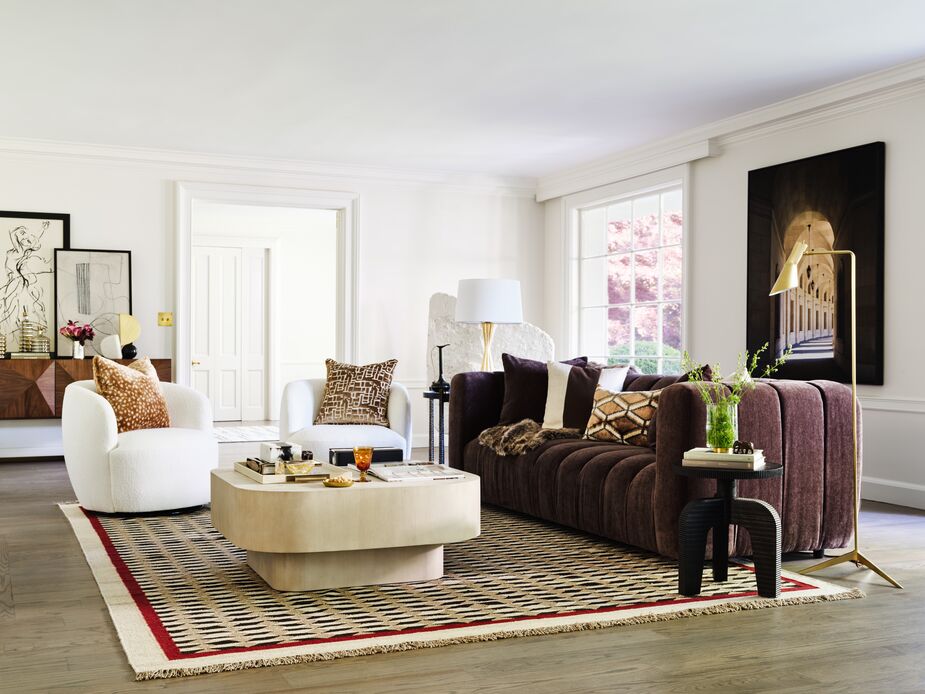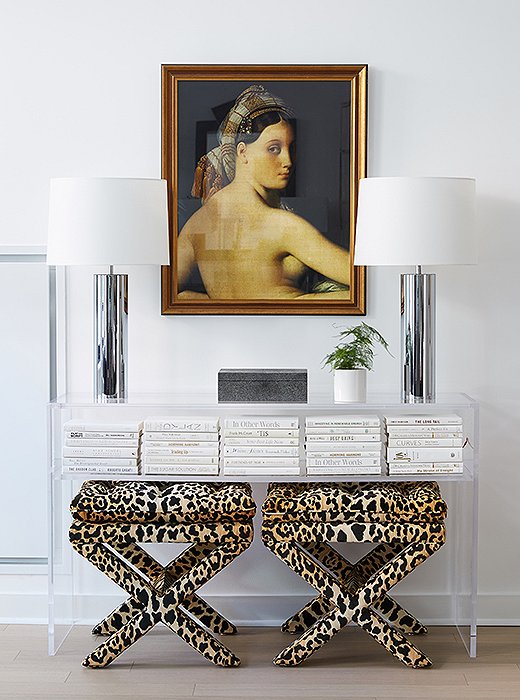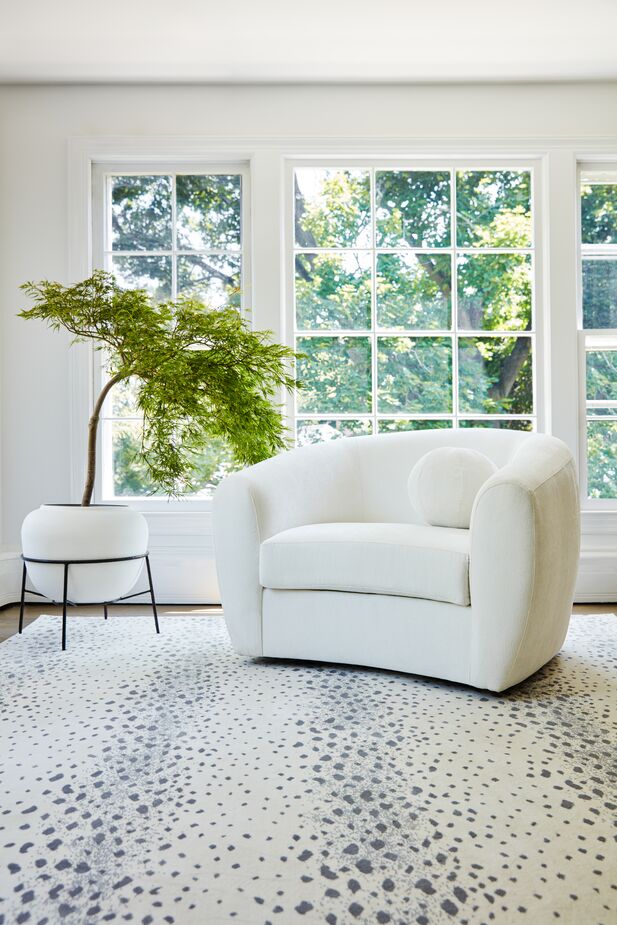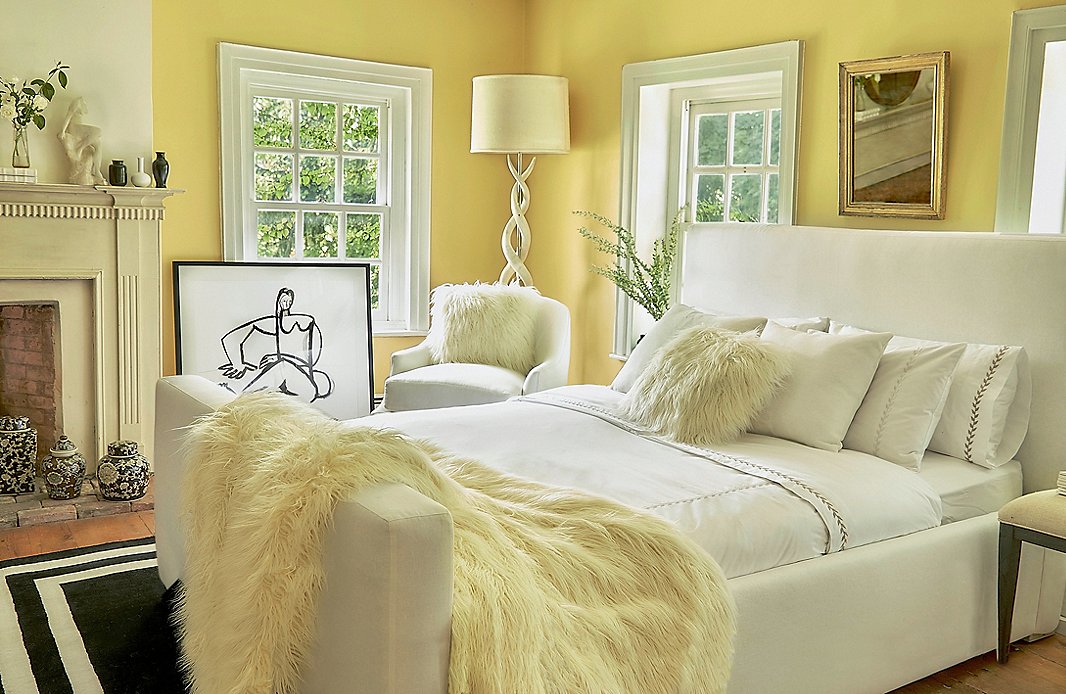Curator might conjure up images of a custodian of valuables, able to recite the provenance of every item in the collection and ready to chide anyone who might come too close to an object. But Curator style—at least how we define it—is much less precious, and more livable, than that.
If Curators had a mantra, it would be “quality over quantity.” You won’t find Curators hanging pictures they don’t love simply to fill a blank wall; they’d rather look at the wall (painted or papered to their exact specifications, of course) than at something that doesn’t meet their standards.

Sumptuous textures and sleek curves form the foundation of this Curator-chic room. The Darcy Performance Velvet Sofa in Java and the Chester Bouclé Swivel Chairs in Snow bring pampering softness, while the glimmer of the Penelope Floor Lamp in Brass adds timeless glamour. Find the rug here, the coffee table here, and the accent table here. Photo by Joe Schmelzer.

The artwork is definitely New Traditionalist, and the leopard-print ottomans would fit right in as well. The sleek chrome cylinder table lamps and the minimalist (and nearly invisible) acrylic console, however, bring Curator chic to the vignette. Room by One Kings Lane Interior Design. Photo by Manuel Rodriguez.
Which is not to say that Curators are necessarily minimalists. They’re simply discerning. The advice given to writers in Strunk and White’s Elements of Style—“A sentence should contain no unnecessary words, a paragraph no unnecessary sentences, for the same reason that a drawing should have no unnecessary lines and a machine no unnecessary parts. This requires not that the writer make all his sentences short, or that he avoid all details and treat his subjects only in outline, but that every word tell”—can easily be tweaked to define Curator chic.
In terms of individual furnishings, Curator style is often associated with metallic or sparkling glass accents that imbue a room with glamour: a gold-framed mirror, chrome or polished nickel sconces, crystal vases. The essence of the style, though, are clean lines and sleek curves that showcase luxe materials such as silk or velvet, leather or marble. And that makes it a restful style, as well as a style that can be integrated into other aesthetics. Even if you consider yourself a New Traditionalist, an Eclectic, or a Naturalist, you can sprinkle touches of Curator chic into your home. Something as simple as an alpaca throw over a rattan armchair or a glossy gourd table lamp atop a live-edge wood table will add a flourish of sophisticated serenity to a room.

The rattan seats and cane inserts of the Tate Rattan Armchairs in Black/Natural nod to Naturalist ease, but the Belle Époque curves put these chairs in the Curator camp. The Luna Chandelier provides a luxurious top note. Find the dining table here and the rug here. Photo by Joe Schmelzer.

Simplicity at its most sophisticated and modern: the Colette Performance Linen Swivel Chair in Snow and the Fauna Rug in Bone. The chair’s stain-resistant, water-repellent upholstery, by the way, makes it practical as well as refined. Photo by Joe Schmelzer.

With sumptuous furnishings such as a faux (but still fluffy) Tibetan lambskin throw and matching pillows, crisp embroidered bedding, and the linen-upholstered Nemus Panel Bed, this bedroom has the luxury component of Curator style down pat. And don’t overlook the well-edited collection of chinoiserie jars at the base of the fireplace and the Picasso-inspired artwork. Even the floor lamp, crafted of sustainably sourced antelope horn, hews to Curator chic thanks to its sleek, sinuous silhouette.

Join the Discussion